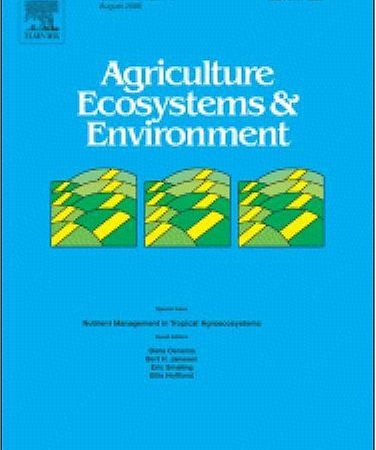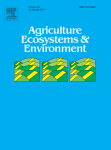
 Climate-smart approaches have gained momentum in tropical, agricultural development. However, to date, few studies have examined whole-farm greenhouse gas (GHG) balances in smallholder crop-livestock systems. This study aimed to quantify GHG balances at farm-scale, identify GHG hotspots and assess mitigation options in coffee-dairy farms undergoing agricultural intensification in Central Kenya. In recent decades, decreasing farm size has forced the shift from extensive practices to zero-grazing systems and higher nitrogen (N) inputs. We hypothesised that different farm strategies and intensification levels determine the farm’s GHG balance. A farm typology
Climate-smart approaches have gained momentum in tropical, agricultural development. However, to date, few studies have examined whole-farm greenhouse gas (GHG) balances in smallholder crop-livestock systems. This study aimed to quantify GHG balances at farm-scale, identify GHG hotspots and assess mitigation options in coffee-dairy farms undergoing agricultural intensification in Central Kenya. In recent decades, decreasing farm size has forced the shift from extensive practices to zero-grazing systems and higher nitrogen (N) inputs. We hypothesised that different farm strategies and intensification levels determine the farm’s GHG balance. A farm typology
was constructed through principal component analysis (PCA) and hierarchical clustering from 125 farms surveyed. Four farm types were identified ranging relatively from small to large farms, low to high li- vestock intensities, and low to high N input rates. Whole-farm GHG balances were estimated using an adapted version of the Cool Farm Tool (CFT). Farms were found to be net sources of GHG, averaging from 4.5 t CO2 eq ha−1 yr−1 in less intensive farms to 12.5 t CO2 eq ha−1 yr−1 in high intensive farms. Within the farm GHG hotspots identified, methane (CH4) from enteric fermentation processes accounted for 26–39% of total farm GHG emissions; nitrous oxide (N2O) and CH4 from manure management systems (MMS) for 26–38%; soil background and fertilizer induced N2O emissions for 24–29%; off-farm production of feeds and agrochemicals for 10–22%; and crop residue management (CRM) for the remaining 1–3%. Within the mitigation practices assessed, zero-grazing stalls already lowered the livestock maintenance energy requirements, reducing enteric fermentation emissions. Stall-feeding, however, brings the necessity-opportunity to manage the manure and our results showed that MMS can be a determining factor in the GHG balance. Increasing the frequency of manure collection from stalls in favour of solid storage systems can reduce N2O emissions by up to 75%. Furthermore, dry manure storage reduced the CH4 emissions of liquid slurry systems by more than 70%. Further benefits in terms of carbon (C) sequestration were identified along farm types from manure and crop residues applications in soils (with averages of −1.3 to −2.3 t CO2 eq ha−1 yr−1) and biomass growth in agroforestry systems (−1.2 to −2 t CO2 eq ha−1 yr−1). Together, soils and woody biomass offset 25–36% of farm emissions. We conclude that reduced farm size and increased livestock density lead to higher emissions per unit area, though this in- crease is smoothed by larger negative fluxes in soils (by higher C inputs) and woody biomass (by higher tree densities) until a steady state is reached. Average yield-scaled emissions, or product carbon footprints (CFs), resulted in 1.08 kg CO2 eq kg coffee berry−1, 0.64 kg CO2 eq kg maize−1 and 1.05 kg CO2 eq kg milk−1 on average. CFs did not always differ between farm types and intensification levels, meaning that increases in productivity were not higher than increases in GHG fluxes from intensification. This may be due to: 1) increases in productivity are the result of more processes other than N inputs; and/or 2) emissions from N inputs are overestimated by EFs and GHG calculators. Smallholders may benefit in the near future from climate initiatives and further field characterisation, models calibration and monitoring are required to overcome critical levels of uncertainty and provide more accurate estimations of GHG balances at farm-scale.








